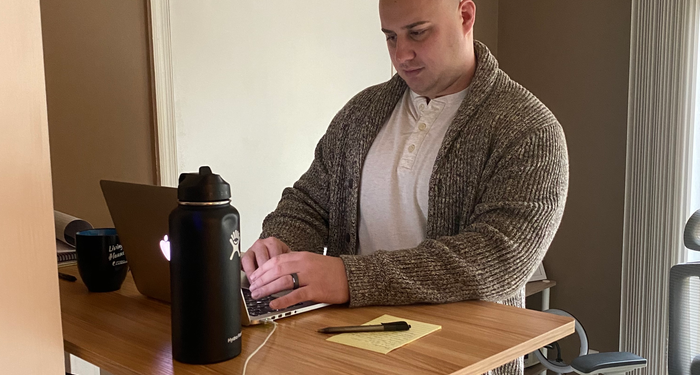Chris Orzechowski prefers to go without watches. However, this didn’t deter him from creating compelling copy for the luxury watch brand Filippo Loreti back in 2016, a campaign that generated over $5 million in just 30 days, making it the 18th largest Kickstarter campaign at that time.
His approach: Prior to crafting a single line, he purchased a watch and immersed himself in the experience of the customer he aimed to engage. He discovered what features were essential, what advantages to highlight, and how the buying process influenced his emotions. He grasped the entire journey, the sale, and the product—he truly understood the consumer.
Chris Orzechowski: Where Email Marketing’s Dual Aspects Converge
Today, Orzechowski stands as one of the most in-demand email copywriters in the e-commerce sector—but he also possesses deep knowledge of the inner workings of email marketing. Within less than ten years, he has aided over 200 brands in generating more than $100 million through email campaigns and automated flows, while coaching countless e-commerce entrepreneurs on how to elevate their businesses using his frameworks.
His specialty lies in linking the outward-facing elements of a business (like products and marketing text) with its internal components (such as email lists and automation) to ensure they function cohesively. When these two parts align, the potential for growth can be immense.
The Internal Structure: Revenue per Subscriber and Automation
On average, brands yield approximately $2.80 for every dollar invested in social media advertising. That’s a decent return; however, when contrasted with the typical $36 to $40 ROI from email marketing, it becomes clear why Chris Orzechowski prioritizes the latter.
“What I adore about email is that it’s mostly free aside from the monthly software fees,” he shares. “Moreover, it’s immediate. You can dispatch an email, and within minutes, sales begin to flow in. That control over your cash flow, your business, your future, and your fate is pretty remarkable.”
Although instant results are gratifying, email marketing emphasizes a long-term strategy—retaining clients, keeping interest high, and compounding sales. Each front-end sale should trigger back-end development—whether a customer made a purchase or merely showed interest, there are opportunities for engagement and revenue. While ROI presents an expansive perspective, Orzechowski leans toward evaluating the effectiveness of a business’s retention strategy via monthly revenue per subscriber (RPS).
“Most earnings are not generated upfront. The bulk comes from the back end,” he elaborates. “If you overlook this metric and find low earnings per subscriber, it likely indicates untapped revenue potential within your retention initiatives.”
The term “opportunity” is crucial here. A low RPS doesn’t mean your business, product, or customer database is lacking; it signifies gaps that cause lost revenue.
Chris Orzechowski’s Book: Scale While You Sleep
Orzechowski presents a straightforward fix for this back-end challenge: automated email sequences. Whether it’s a post-purchase series to win back customers after they’ve left or a cart abandonment sequence to gently remind them of their interest, automated email flows serve as straightforward solutions that can permanently eliminate leaks you might not even realize were present.
(In his book, Scale While You Sleep, Chris Orzechowski explores nine of his preferred automated email sequences that immediately enhance RPS and ROI. It’s a concise 100 pages and can be purchased on Amazon.)
“Start by establishing your abandonment sequences,” he advises. “Those demonstrating interest in purchasing are the most critical audience, and they represent the easiest wins.”
The most advantageous aspect of email automations is their durability and minimal upkeep—Orzechowski mentions that he created automations for clients in 2017 that continue to generate sales today, seven years after their initial payment. That’s remarkable compounded growth in ROI over time.
For email marketers concerned about potentially overwhelming their clients with excessive communications (a valid worry), Orzechowski notes that successful brands thrive because they do not share that apprehension. They don’t send one newsletter a month—that translates to lost revenue. Instead, they dispatch multiple messages weekly—that translates directly to profit.
“Perhaps success leaves trails,” Orzechowski muses.
The Outward-Facing Aspect: Email Copywriting
Another area of Orzechowski’s expertise is copywriting itself. Assessing the performance of subjective writing is often more challenging than tracking measurable metrics like click-through rates. Nonetheless, Orzechowski asserts that the two elements are intimately connected.
“In terms of copy, it comes down to identifying which numbers and metrics are lacking and determining how we can enhance them,” he states.
Frequent unsuccessful metrics often reflect the reservations or worries of potential buyers. Effective copywriting, combined with strategic sequencing, can directly address these concerns.
“Ironically, much copy revolves around making significant promises and then resolving the objections hindering the sale,” Orzechowski emphasizes. “[Copywriting involves] translating the same dialogue that occurs in face-to-face interactions into written form. That’s where the best copywriters excel—they encapsulate the essence of those conversations more effectively than anyone else.”
That forms the foundation of his advice for aspiring copywriters he hires, coaches, and guides: It revolves around comprehending the customer’s journey from discovery to ‘purchase.’ Crafting impactful copy necessitates immersing oneself in their unique needs, inquiries, and fears—just as Orzechowski did for Filippo Loreti with remarkable results.
“Most people fail to do this, which is why they face challenges. They don’t comprehend the nuances within a specific market. They fail to grasp the mentality of that market because they aren’t part of it,” Orzechowski insists. “You need to fully embrace the role of the customer. You have to be like Daniel Day-Lewis. You have to embody the role.”
Orzechowski’s newest publication, The Moat, guides founders through the intricacies of email strategies, copywriting, customer acquisition offers, and all critical elements essential for scaling and advancing their brands.


